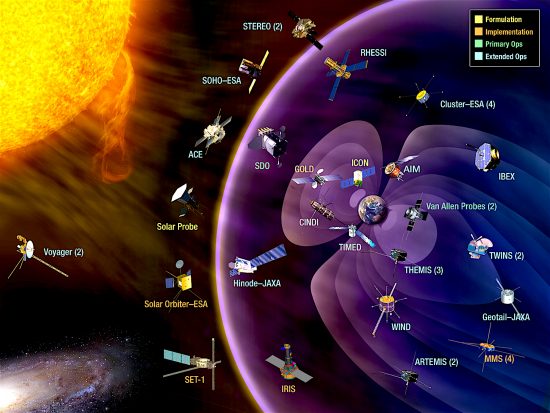Nov 21, 2016
The Sun is not a fusion reactor.
Heliophysicists believe that the Sun’s core pressure is so dense and the temperature so high that hydrogen atoms crush together until they fuse into helium. It is thought to be approximately 15 million Celsius and more than 340 billion times Earth’s atmospheric pressure. The magnitude of that energetic discharge is so great that Earth, 148 million kilometers away, is heavily irradiated.
The visible part of the Sun is the photosphere. Above that, the chromosphere extends for thousands of kilometers. Finally, the corona reaches out for millions of kilometers into space. A great mystery in modern astrophysics is why the photosphere averages 6000 Celsius, while the corona can be as much as two million Celsius. The hottest region of the Sun begins at an altitude of 4000 kilometers, extends over a million kilometers from its surface, yet shows no sign of a significant temperature drop.
Recently, some heliophysicists proposed that “rearrangement of magnetic field lines,” otherwise known as “magnetic reconnection,” causes coronal heating. Satellite observatories, such as SOHO (Solar and Heliospheric Observatory) and TRACE (Transition Region and Coronal Explorer) detect rapidly changing magnetic regions on the Sun’s surface. Conventional ideas point to that activity as support for reconnection events.
Modern theories see magnetic lines in plasmas, rather than perceiving an electromagnetic field. Those lines are said to “break” and “reconnect”. Solar plasmas are complex systems, so what causes those lines to break apart and merge together again is not well understood. A major stumbling block in the theory is that no one has ever seen magnetic field lines reconnecting. According to the author of The Electric Sky, retired Professor of Electrical Engineering, Dr. Donald Scott, no one ever will.
In an Electric Universe, solar flares, coronal heating, and all other solar activity are caused by fluctuations in the amount of charge flowing into the Sun. That charge exchange takes the form of plasma filaments that are gigantic in scale. They are extremely diffuse, but are so large that they carry tremendous amounts of electricity. Called “Birkeland currents”, they supply power to the electric circuit centered on the Sun.
The Sun’s power is external, provided by electric charge flowing through vast circuits in space, so the radiation and “wind” from the Sun are due to plasma discharge phenomena of various types. The Sun’s energy is focused from the outside and not radiated from the inside.
As written elsewhere, double layers form when electricity flows in plasma, causing positive charges to build up in one region of a plasma cloud and negative charges to build up nearby. A powerful electric field appears between the two regions, which accelerates charged particles. Sometimes, the stored electrical energy in a double layer is catastrophically discharged in a “Langmuir burst.” Those bursts are what conventional astrophysicists call “magnetic reconnection”, although they are obviously not familiar with Langmuir’s work.
Plasma physicist Hannes Alfvén wrote:
“The most important criticism of the ‘merging’ mechanism of energy transfer is due to Heikkila (1973) who with increasing strength has demonstrated that it is wrong. In spite of all this, we have witnessed at the same time an enormously voluminous formalism building up based on this obviously erroneous concept. Indeed, we have been burdened with a gigantic pseudo-science which penetrates large parts of cosmic plasma physics…We may conclude that anyone who uses the merging concepts states by implication that no double layers exist.”
Stephen Smith













